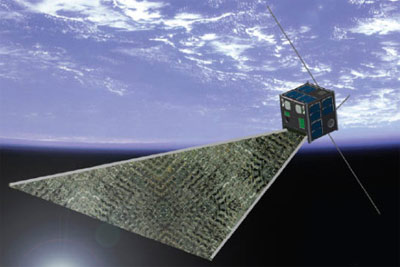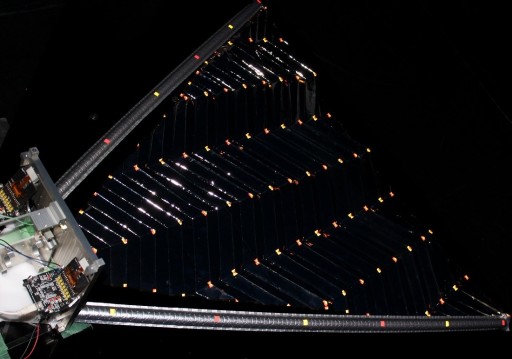SPROUT

SPROUT is a project of Nihon University and stands for Space Research On Unique Technology. The project was initiated in 2005 as a follow-on to SEEDS – Space Engineering Educational Satellite. The SPROUT satellite will perform a number of technical demonstrations, provide Earth imagery and serve as an amateur radio satellite for public involvement and outreach.
The satellite body is cubical in shape with a total spacecraft mass of 6.7 Kilograms. The satellite uses an aluminum framework and aluminum external panels. Electrical power is provided by body-mounted solar panels and attitude sensing and control is accomplished by a sun sensor, a magnetometer and a gyroscope unit. Attitude actuation is provided by magnetic torquers to align the satellite in its operational position.

The main payload of the SPROUT spacecraft is an external membrane that is triangular in shape and measures 1.5 meters. The membrane is expanded by Nitrogen gas fed from a cartridge that deploys two tubes to which the membrane is attached. In its launch configuration, the membrane is folded using an octagon folding technique. The membrane is attached to two tubes that are deployed by cutting strings once in orbit and injecting Nitrogen gas and inflate the tubes to fully deploy the membrane.
This membrane experiment serves as a pathfinder for future spacecraft utilizing solar sails for power generation. Additionally, the experiment will yield measurements of orbital drag by recording the orbital parameters of the spacecraft with its membrane deployed and experiment with the attitude of the satellite to provide data for orbital modeling for future missions.
SPROUT carries three cameras – two serve engineering purposes monitoring the external membrane and the third camera is used for outreach.

SPROUT uses two VHF/UHF downlink and two uplink radio frequencies – one downlink and uplink is reserved for mission operations while the other is used for outreach activities allowing amateur radio operators to up and downlink data from the spacecraft.
Radio operators can use the Digi Repeater to uplink very short messages that can then be downlinked by other radio stations. Using the outreach camera on the spacecraft, radio operators can downlink Slow Scan TV images from the spacecraft showing Earth when the spacecraft is in the correct attitude. The images will be 320 by 256 pixels in size.
